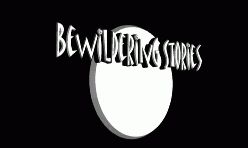Challenge 104
The Value of the Constant c
In physics, c represents the maximum speed of light, which, as Einstein has shown, is a cornerstone in the architecture of the cosmos. C could also represent a “constant” in human terms, as well. We shall see...
In Gaia, Tala Bar introduces Dar to Timma, who is something like a grandmother to the telepathic sea creatures. Dar learns a lot about the creatures’ family relationships, but the episode is richer than one might think upon reading it quickly. What else does Dar learn about these strange people aside from what she is told?
Euhal Allen has carefully constructed a story on the ambivalent reception given to a physical sign of hope, a bridge that connects all countries. How are the protagonists and antagonists defined in “The Bridge”?
Ian Donnell Arbuckle depicts a family in “Goodbye, Grand Mother” that resembles in some ways the one in his recent novel Made It Way Up. Why do we sympathize with Bernard, in the novel, and with the Man, in the short story?
In Mark Koerner’s article, constructed languages seem like a colorful oddity, but what are the proponents of artificial languages trying to achieve?
Steven Utley concludes “Welcome to the Future” by noting that his essay lost out to one that said it might be a good thing if a space probe contacted God. In what way is that a crushingly ironic ending?
In Dark Age Ahead, Jane Jacobs refers to a very common experience of public life:
“God’s Epiphany” has more than one level of meaning. At one level we have the (or a) deity; at another, a human being; at yet another, a parent. All are subjected to stress. What is the epiphany in “God’s Epiphany”?
Even genteel concert and theater centers from which hordes of people emerge simultaneously, all wanting to nab taxis or buy a drink, breed pushiness and other bad manners. (p. 156)
Her point is that if an innocuous concert or theater center can promote unruly behavior, what do the single-use requirements of land zoning promote? No need to guess: public disorder and street crime. Her solution comes from observation: “In cities, differing uses in close proximity tame one another.” How does Sherry Smith Gray’s story, “God’s Epiphany” illustrate what Jane Jacobs is talking about?
C, the speed of light, sets the shape of the cosmos. Communities shape civilization.
Copyright © 2004 by Bewildering Stories
What is a Bewildering Stories Challenge?

